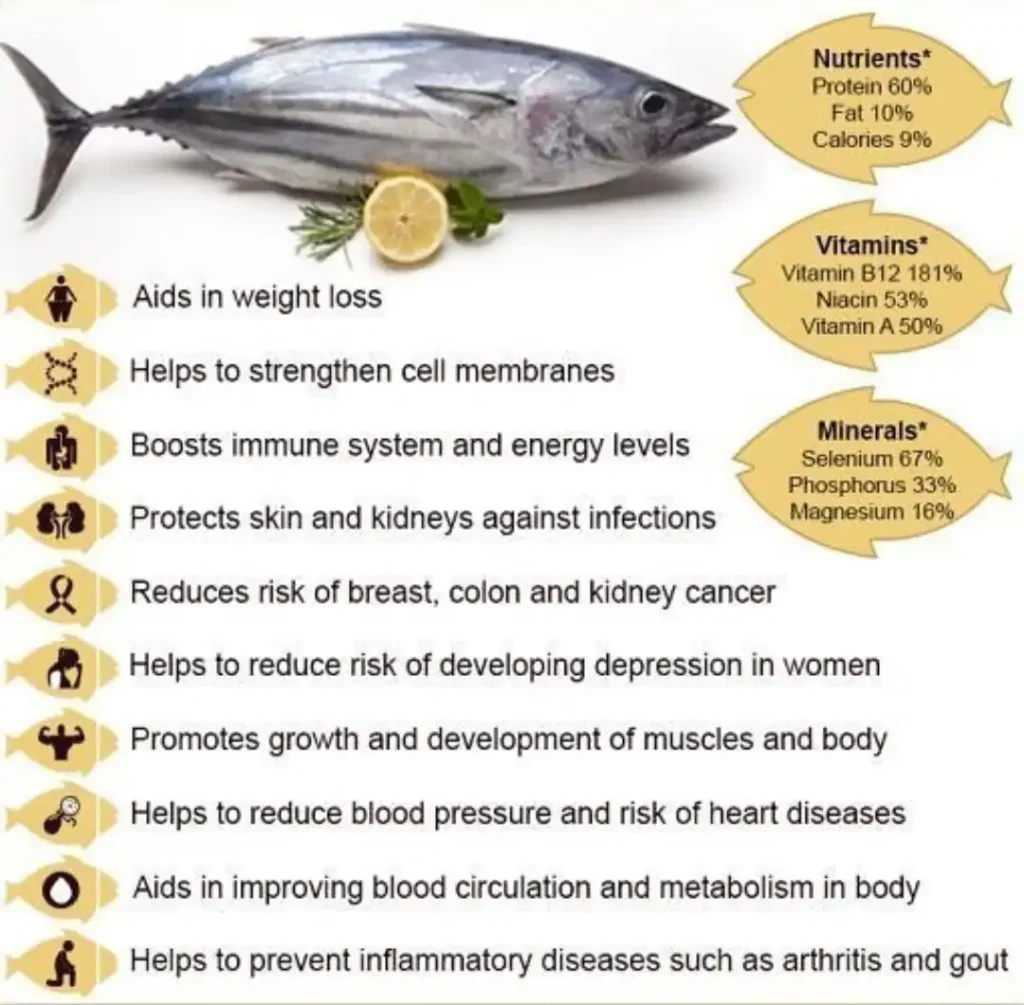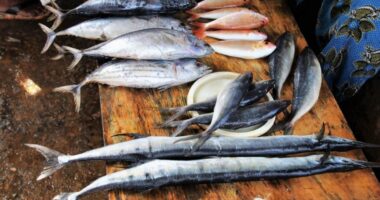When it comes to exploring the depths of our oceans and uncovering the mysteries hidden beneath the waves, few fish capture the imagination like the Kera fish. Known by various names across the globe, including “Choora fish” and “tuna fish” in English, this remarkable aquatic creature has fascinated both scientists and seafood enthusiasts for generations. In this article, we will dive deep into the world of Kera fish, shedding light on its characteristics, culinary uses, and health benefits.
Introduction

Kera fish, commonly referred to as Choora fish and also known as tuna fish in English, is a fascinating marine species that has earned a special place in the hearts of seafood enthusiasts and researchers alike. This article aims to provide a comprehensive look at Kera fish, including its physical attributes, habitat, culinary uses, nutritional value, and its importance in various cultures.
What is Kera Fish?

Kera fish, scientifically classified as Thunnus, is a genus of ocean-dwelling fish known for its streamlined body, powerful swimming abilities, and delectable flesh. These fish are highly sought after in the culinary world due to their exceptional taste and versatility in various dishes.
While Kera fish is its most common name, it goes by different monikers in different regions. In some parts of the world, it is referred to as Choora fish, and in English-speaking countries, it is often called tuna fish.
- Physical Attributes
Kera fish are instantly recognizable by their sleek, torpedo-shaped bodies. Their powerful tails and hydrodynamic design allow them to swim at incredible speeds, making them formidable predators in the ocean.
Kera fish come in various sizes, with some species reaching lengths of up to 10 feet or more. Their size can vary based on factors such as species, age, and environmental conditions.
- Habitat and Distribution
One of the remarkable aspects of Kera fish is their wide distribution. They can be found in oceans around the world, from the tropical waters of the Pacific to the colder Atlantic regions.
Kera fish thrive in pelagic environments, which are the open waters of the ocean. They are known for their extensive migrations and can cover vast distances during their lifetime.
Nutritional Value of Kera Fish


When it comes to nutrition, Kera fish is a true standout. Its delicious taste is just one aspect of its appeal; it’s also packed with essential nutrients that offer numerous health benefits. Below, we’ll explore the impressive nutritional profile of Kera fish:
- High-Quality Protein
This fish is renowned for being an excellent source of high-quality protein. Protein is essential for various bodily functions, including muscle growth, tissue repair, and the production of enzymes and hormones. Consuming protein-rich foods like Kera fish can contribute to maintaining and repairing the body’s tissues.
- Omega-3 Fatty Acids
One of the most notable nutritional attributes of choora fish is its rich omega-3 fatty acid content. Omega-3 fatty acids, including eicosapentaenoic acid (EPA) and docosahexaenoic acid (DHA), are beneficial for heart health. They have been associated with reducing the risk of cardiovascular diseases, lowering blood pressure, and improving cholesterol levels.
- Vitamin D
This fish is a natural source of vitamin D, a crucial nutrient that plays a significant role in bone health. Adequate vitamin D intake is essential for calcium absorption, promoting strong and healthy bones. It also contributes to overall immune system function.
- Selenium
Selenium is a trace mineral found in tuna fish that acts as a powerful antioxidant. It helps protect the body from oxidative stress and inflammation, potentially reducing the risk of chronic diseases. Selenium also plays a role in thyroid function and immune system support.
- Other Essential Nutrients
In addition to the key nutrients mentioned above, tuna fish provides various essential vitamins and minerals such as vitamin B12, niacin, phosphorus, and magnesium. These nutrients are vital for maintaining overall health and well-being.
Incorporating Kera Fish into Your Diet


When it comes to culinary adventures, Kera fish is a prized ingredient that chefs and home cooks alike treasure. Its firm yet tender flesh, mild flavor, and versatility make it a delightful addition to a wide range of dishes. Let’s explore some of the ways you can transform Kera fish into delectable creations in your own kitchen:
Grilled Kera Fish Steaks
Grilling Kera fish steaks is a classic and beloved preparation method. The process is simple yet yields mouthwatering results. Here’s how to do it:
- Marinate: Begin by marinating the choora fish steaks in your preferred mixture of herbs, spices, olive oil, and citrus juice. This step infuses the fish with flavor and enhances its natural taste.
- Grill: Preheat your grill to medium-high heat. Place the marinated choora fish steaks on the grill grates and cook for a few minutes on each side until the fish is grill-marked and easily flakes with a fork.
- Serve: Garnish your grilled choora fish steaks with fresh herbs and a squeeze of lemon or lime for a burst of freshness. Pair them with grilled vegetables or a light salad for a balanced meal.
Baked Kera Fish Fillets
Baking Kera fish fillets is a straightforward and healthy cooking method that preserves the fish’s natural flavors. Here’s how to create a simple yet satisfying dish:
- Season: Season the choora fish fillets with a mixture of herbs, olive oil, lemon zest, and a pinch of salt and pepper. You can also add garlic or your favorite spices for extra flavor.
- Bake: Place the seasoned fillets on a baking sheet lined with parchment paper. Bake in a preheated oven at 375°F (190°C) for about 15-20 minutes or until the fish easily flakes.
- Plate: Transfer the baked choora fish fillets to a serving platter, drizzle with a bit of extra-virgin olive oil, and garnish with fresh herbs or microgreens. This dish pairs wonderfully with a side of steamed vegetables or quinoa.
Kera Fish Sushi and Sashimi
For those who appreciate the art of sushi making, Kera fish is a prized choice. Its firm texture and mild flavor lend themselves beautifully to sushi and sashimi preparations. Here’s how to create your own sushi masterpiece:
- Prepare Rice: Start by preparing sushi rice according to package instructions. Season it with rice vinegar, sugar, and salt, then let it cool to room temperature.
- Slice Thin: Slice the tuna fish into thin, bite-sized pieces. For sashimi, arrange the slices on a plate. For sushi, you can place the fish atop small beds of rice.
- Add Accompaniments: Enhance the flavors with accompaniments like pickled ginger, wasabi, and soy sauce. You can also include avocado, cucumber, or other favorite sushi fillings.
- Roll Sushi: If you’re making sushi rolls, use sheets of nori (seaweed) to encase the rice, tuna fish, and fillings. Roll tightly using a bamboo sushi mat, then slice into bite-sized pieces.
Kera Fish Tacos
Kera fish tacos are a delightful fusion of flavors, combining the flakiness of the fish with zesty toppings. Here’s how to make your own at home:
- Cook: Grill or pan-sear small pieces of tuna fish until they are cooked through and lightly browned on the edges. Season with your favorite taco seasoning.
- Assemble: Fill soft tortillas with the cooked tuna fish, fresh salsa, diced avocado, shredded lettuce, and a drizzle of tangy sauce. You can use traditional taco toppings or get creative with your favorite ingredients.
- Enjoy: Serve your homemade tuna fish tacos with lime wedges and extra sauce on the side. These tacos are perfect for a casual and flavorful meal.
Kera Fish Ceviche
Kera fish ceviche is a refreshing and zesty dish that’s ideal for warm weather or as a light appetizer. Here’s how to prepare this delightful dish:
- Dice and Marinate: Cut the choora fish into small, bite-sized pieces. Marinate it in a mixture of fresh lime and lemon juice. The citric acid “cooks” the fish as it sits, giving it a unique texture and flavor.
- Add Fresh Ingredients: Incorporate diced onions, tomatoes, cilantro, and a touch of chili for heat. Adjust the ingredients to suit your preferred level of spiciness and acidity.
- Chill: Allow the ceviche to chill in the refrigerator for at least 30 minutes to meld the flavors and firm up the fish.
- Serve: Serve the tuna fish ceviche in small bowls or glasses, garnished with additional cilantro leaves. It’s a vibrant and tangy appetizer that’s sure to impress.
Kera Fish Poke Bowls
Embrace the trendy poke bowl trend by incorporating Kera fish into your own bowl creation. Here’s how to make a delicious and customizable poke bowl:
- Prepare Ingredients: Begin by cutting tuna fish into bite-sized cubes. Then, prepare a base of cooked rice, quinoa, or mixed greens in a bowl.
- Add Toppings: Layer the bowl with your choice of fresh vegetables, such as sliced cucumbers, avocado, edamame, and radishes. Top with the cubed tuna fish.
- Sauces and Dressings: Drizzle your favorite sauces or dressings over the bowl. Traditional poke bowl sauces often include soy sauce, sesame oil, and sriracha for a hint of spice.
- Garnish: Finish your tuna fish poke bowl with garnishes like sesame seeds, sliced green onions, and nori strips. These add texture and flavor to the dish.
Pasta with Kera Fish
For a delightful fusion of flavors, consider incorporating flaked Kera fish into your pasta dishes. Here’s a simple way to create a flavorful pasta dish:
- Cook Pasta: Cook your favorite pasta, such as linguine or fettuccine, according to package instructions. Drain and set aside.
- Prepare Sauce: In a separate pan, heat olive oil over medium heat. Add minced garlic and sauté until fragrant. Then, add flaked tuna fish, lemon zest, and a touch of red pepper flakes for a subtle kick.
- Combine: Toss the cooked pasta in the sauce, ensuring that it’s well-coated with the flavors of the Kera fish and seasonings.
- Serve: Plate your pasta with tuna fish and garnish with fresh herbs, such as parsley or basil. This dish is both comforting and elegant.
Incorporating this fish into your culinary repertoire opens the door to a world of delightful flavors and creative possibilities. Whether you’re grilling, baking, rolling sushi, or experimenting with fusion cuisine, choora fish promises a culinary journey filled with culinary delight. So, roll up your sleeves, sharpen your knives, and let your kitchen adventures with this fish begin!
Health Benefits of Kera Fish

Incorporating this fish into your diet not only delights your taste buds but also contributes to your overall well-being. This remarkable seafood offers a range of health benefits, making it a valuable addition to a nutritious lifestyle. Here are some of the key health advantages of consuming Kera fish:
- Heart Health and Omega-3 Fatty Acids
Kera fish is renowned for its high content of omega-3 fatty acids, specifically eicosapentaenoic acid (EPA) and docosahexaenoic acid (DHA). These essential fatty acids play a pivotal role in promoting heart health. They are known to:
- Reduce the Risk of Heart Disease: Omega-3 fatty acids help lower the risk of heart disease by reducing inflammation, improving blood vessel function, and lowering triglyceride levels.
- Lower Blood Pressure: Regular consumption of choora fish can contribute to the maintenance of healthy blood pressure levels, reducing the risk of hypertension.
- Enhance Cholesterol Profiles: Omega-3s have been shown to increase high-density lipoprotein (HDL or “good”) cholesterol while lowering low-density lipoprotein (LDL or “bad”) cholesterol, creating a favorable cholesterol balance.
- Boosting Brain Function
The omega-3 fatty acids found in this fish are not only beneficial for the heart but also for the brain. They have been linked to:
- Improved Cognitive Function: Regular consumption of omega-3s may enhance cognitive function, including memory and problem-solving skills. They are particularly important for brain development in infants and young children.
- Mood Stabilization: Omega-3s may help manage mood disorders such as depression and anxiety. They have been associated with improved mood and reduced symptoms of these conditions.
- Rich Source of Protein
Protein is an essential nutrient, and choora fish provides a significant amount of high-quality protein. Protein is crucial for:
- Muscle Growth and Repair: The body requires protein to build and repair tissues, including muscles. It is essential for those engaged in physical activities and exercise.
- Satiety: Protein-rich foods like tuna fish can help you feel full and satisfied, which can aid in weight management by reducing overeating.
- Vitamin D for Bone Health
Kera fish is a natural source of vitamin D, which is vital for bone health. Vitamin D helps the body absorb calcium, a key mineral for strong and healthy bones. Adequate vitamin D intake can contribute to:
- Strong Bones: Ensuring you have enough vitamin D in your diet can help prevent conditions like osteoporosis and osteomalacia, which are characterized by weakened bones.
- Selenium as an Antioxidant
This fish contains selenium, a trace mineral that acts as a powerful antioxidant. Selenium helps protect the body from oxidative stress and inflammation, potentially reducing the risk of chronic diseases. It also plays a role in thyroid function and immune system support.
When We Should Avoid Kera Fish


Kera fish contains selenium, a trace mineral that acts as a powerful antioxidant. Selenium helps protect the body from oxidative stress and inflammation, potentially reducing the risk of chronic diseases. It also plays a role in thyroid function and immune system support.
Incorporating tuna fish into your diet allows you to enjoy these health benefits while savoring its delicious flavor. Whether you’re looking to support heart health, boost brain function, or simply provide your body with essential nutrients, this fish offers a wholesome and flavorful way to achieve your dietary goals.
Consuming Kera fish is generally considered safe and beneficial for most people due to its rich nutritional profile and health benefits. However, there are certain situations when it may be advisable to exercise caution or avoid choora fish consumption:
- Allergies: If you have a known seafood allergy, including allergies to other types of fish or shellfish, it’s crucial to avoid tuna fish and related seafood altogether. Allergic reactions to seafood can range from mild to severe and may include symptoms like itching, swelling, difficulty breathing, or anaphylaxis, a life-threatening reaction.
- Mercury Concerns: While Kera fish is generally low in mercury compared to some other large predatory fish, it’s still advisable for pregnant women, nursing mothers, and young children to limit their consumption. High mercury intake during pregnancy can potentially harm the developing nervous system of the fetus. It’s recommended to consult with a healthcare provider for specific dietary guidance during pregnancy and breastfeeding.
- Fish Farming Practices: Pay attention to the source of your Kera fish. Fish that are raised in unregulated or poorly managed aquaculture facilities may be exposed to contaminants and antibiotics. It’s best to choose tuna fish from reputable sources or opt for sustainably sourced options.
- Medication Interactions: If you are taking medications that interact with seafood or fish oil supplements (e.g., blood thinners like warfarin), consult your healthcare provider. Kera fish and other fish oil supplements can affect blood clotting, and adjustments to your medication may be necessary.
- Foodborne Illness: As with any seafood, there is a risk of foodborne illness associated with tuna fish. To minimize this risk, ensure that you purchase and store tuna fish properly, cook it thoroughly to an internal temperature of at least 145°F (63°C), and follow safe food handling practices.
- Sustainability Concerns: Check the sustainability of the Kera fish you consume. Unsustainable fishing practices can harm marine ecosystems and deplete fish populations. Look for certifications from organizations like the Marine Stewardship Council (MSC) or consult seafood sustainability guides to make eco-friendly choices.
In most cases, when consumed in moderation and with consideration of individual health circumstances, this fish is a nutritious and flavorful addition to a balanced diet. However, it’s always a good idea to consult with a healthcare provider or nutritionist if you have specific dietary concerns or medical conditions that may affect your ability to consume seafood safely.
Conclusion
The Kera fish, known as Choora fish or tuna fish, is a captivating creature that has made its mark in the worlds of cuisine, culture, and conservation. Its remarkable attributes, culinary versatility, and health benefits make it a true wonder of the ocean. As we continue to explore and appreciate the treasures of our seas, this fish stands as a testament to the beauty and importance of marine life.
FAQs
Is Kera fish the same as Choora fish?
Yes, this fish is indeed the same as Choora fish. These are different names for the same species of fish, known as tuna fish in English.
How can I cook Kera fish at home?
This fish can be prepared in various ways, including grilling, searing, baking, and making sushi. Explore different recipes to find your favorite.
Are there any health risks associated with consuming Kera fish?
This fish is generally safe to eat and offers numerous health benefits. However, individuals with seafood allergies should exercise caution.
Can Kera fish be found in both saltwater and freshwater?
This fish primarily inhabit saltwater environments, particularly the open ocean. They are not typically found in freshwater.
What is the best way to store Kera fish?
For optimal freshness, store this fish in the freezer if not using it immediately. When storing fresh Kera fish, keep it refrigerated and consume it within a day or two.




